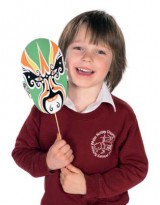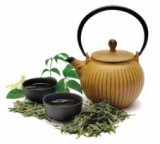Introducing children to a non-European language and culture needn’t be a daunting prospect, says Clare Kelly
The international dimension of education is becoming increasingly important – indeed, young people these days can hardly fail to be aware of their global citizen status. As primary school practitioners, we are in an ideal position to integrate international learning opportunities within the existing curriculum, allowing children to approach matters with a different perspective, as well as understand more about their own identity and the part they play within their community… but how many of us limit the scope of this to a European ‘comfort zone’?
During 2010, nine schools in Wakefield Local Authority worked together to introduce the teaching of Mandarin and Chinese culture across the curriculum. As the lead teacher for MFL in primary schools in Wakefield I have been supporting staff in this venture – and whilst the thought of the project was equally intimidating and exciting initially, thanks to two British Council initiatives, plus a strong element of community involvement, it has proven to be a thoroughly enjoyable and enriching experience for staff, pupils and parents. Why not take advantage of the help that’s available, and step outside your own comfort zone? You have nothing to lose but your limitations!
 Contact the british council
Contact the british council
Connecting Classrooms is a British Council initiative, which creates partnerships between clusters of schools in the UK and others round the world. The Wakefield schools successfully applied for the scheme, and each was teamed with a school in Chengdu, within the province of Sichuan – home of the Giant Panda Research Base, and famous for its sizzling hot and spicy food! As part of the process, headteachers and senior leaders were invited to spend a week in the province, meeting with equivalent staff members, discussing goals and a joint action plan for the three year project, and visiting the partner schools – observing and leading lessons, meeting staff and pupils, exchanging gifts, and joining staff on cultural visits that enabled staff to purchase authentic resources for use in lessons back in the UK.
In 2009/10 alone the British Council supported over 400 partnerships between schools in England and China. There is no joining fee, and participating schools and coordinating bodies can receive grants to support activities that sustain their links during their involvement. Because it’s a cluster-based programme, you need to contact your local authority or other coordinating body to see what other schools in the area want to be involved, then look at the British Council website to see what opportunities there are: http://www.britishcouncil.org
 Introduce native language speakers
Introduce native language speakers
As part of the Connecting Classrooms project, each school in the Wakefield cluster agreed to introduce the learning of Mandarin. Our Local Authority had already embedded the use of Foreign Language Assistants to support the teaching of French, German and Spanish in many of its High Schools and an increasing number of primary schools; the British Council Chinese staff members who supported our visit in Chengdu suggested that we look at the Chinese Language Assistant model.
CLAs are very experienced practising teachers of English in Chinese primary or secondary schools, interviewed by the British Council Team in China before joining schools in the UK. The Wakefield Cluster decided to appoint three – sharing the nine schools between them. They are mainly responsible for teaching Chinese, but also contribute to a range of subjects such as citizenship, history, geography, food technology and sport. School partnerships have been greatly strengthened by the presence of the Chinese assistants, and enriched by the contribution which they make, with many assistants taking responsibility for joint curriculum project work during their time in the UK. For example, the CLA at Dane Royd, Mrs Hongyan Deng (Amy), is skilled in Tai Chi, traditional dance and Kung Fu, and is using these assets as part of an extra curricular club. CLAs can also support other schools within the LA, running Chinese clubs or taster lessons in both primary and secondary schools that are thinking of introducing Chinese to the curriculum in the future.
 Reach out to the community
Reach out to the community
No funds to employ a Chinese Language Assistant? What about using a member of the community who speaks Mandarin? As a tonal language, Mandarin is very challenging as a non-speaker to deliver. It can be hugely beneficial, therefore, to involve a native speaker who happens to live locally, and who under the direction of the teacher can provide the relevant pronunciation for language games and songs to engage children’s interest.
Songs, in particular, can be used to introduce or reinforce key vocabulary – using actions will support the language retention, and setting them to traditional tunes, with which the children are already familiar, will further enhance the learning. Karaoke style songs with the words shown in pinyin (the official system that romanises Chinese characters) are easily found on YouTube and similar sites, and make singing along fun (a favourite in my Y6 class was Ni Wa Wa – ‘Mud Doll’: http://www.youtube.com/watch?v=MpMCoavHQws. Performing a Chinese song or two at assemblies is always a sure-fire hit with pupils and parents alike!
 Search out authentic cultural experiences
Search out authentic cultural experiences
Whilst not every school will be able to benefit from soaking up Chinese culture at first hand, the closer you can bring pupils to authentic experiences, the better. As part of our visit to Chengdu, for example, we enjoyed a presentation of the ‘Changing Faces’ Sichuan Opera. This fun, fast and unique show is perfectly assessable for children – and many videos from genuine, traditional performances can be found on YouTube. After watching the clips and discussing them, students can be engaged in follow up activities such as: making a papiermâché Sichuan Opera face mask; researching the history of the face changing masks and the importance of keeping the traditional methods secret; exploring and performing some of the traditional dance moves as part of a workshop.
Another advantage of visiting Sichuan was discovering just how different home cooked Chinese food is from standard takeaway offerings! Finding someone – be it a CLA or community member – who can teach classes how to make, say, authentic egg fried rice, can really help to get everyone cross-culturally engaged. Cooking has certainly been a favourite activity with pupils and staff at the Wakefield schools, where CLA Mrs Rong Li (Christine) – a talented cook – has been preparing traditional dishes with the children and teaching them to use chopsticks. This has led to non-fiction writing opportunities across the curriculum, with pupils producing instructions on how to cook rice; reports on the origin of chopsticks; and discussion texts looking at the pros and cons of knives and forks versus traditional Chinese eating implements.
Supporting parents with maths
Ace-Maths
Use scaffolding to wean children off high levels of TA support
Ace-Kitchen-Manager
Why every child should feel at home in an art gallery
Ace-Art-And-Design
